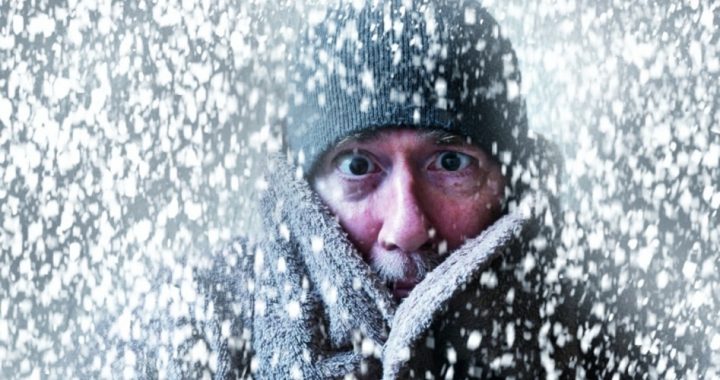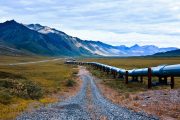
On Christmas morning, as I scraped ice from the sidewalk and shivered, with the outside temperature hovering close to zero, I just had to ask myself: Where’s all this global warming we’ve been promised?
Climate alarmists tell us that anecdotal evidence is useless when talking about climate change. “You can’t simply look out the window and see the long-term trends of the climate” is a typical argument. And it would be a decent argument if they didn’t use such anecdotal evidence all the time themselves.
Earlier this year, the intensity of Hurricanes Harvey, Irma, and Maria were all quickly blamed on climate change by sources such as Scientific American, Climate Central, and even noted climate scientist (sarcasm alert), Miami Mayor Tomas Regalado, who said during Irma’s landfall in Florida, “If this isn’t climate change, I don’t know what is.” It made no difference that prior to 2017 there had just been a decade-long dearth of such mega-storms in the Atlantic Ocean. Global warming, they told us, could be the only culprit for the ferocity of these storms.
More recently, the catastrophic wildfire season in California was blamed on anthropogenic global warming , most notably by California Governor Jerry Brown. In a December 9 statement, Brown called the recent fires “a new normal,” and went on to say of his state, “We dwell in this very wonderful place — but a place that’s getting hotter.”
Everything from Brexit to brain-eating amoeba has been blamed on global warming.
So, being what’s good for the goose is good for the gander, here is some anecdotal evidence to the contrary:
Between Christmas Day and dawn on December 26, Erie, Pennsylvania, received an amazing snowfall total of 53 inches, a two-day record for the Commonwealth of Pennsylvania. By way of reference, the previous snowfall record in Erie for seven days was a mere 39.8”. As of Tuesday, snow was still falling intermittently with snow expected through Wednesday, Dec. 27.
Bitter cold conditions swept across the northern tier of states from Montana all the way to Wisconsin on Christmas Day. Wind chills were -40 degrees in many places. In Minneapolis, wind chill temperatures were reported to be -35 degrees, one of the coldest Christmas Days on record.
The same weather system that caused the incredible snow fall in Erie made for a snowy Christmas for New York State and New England as thundersnow, high winds. and white-out conditions were reported all the way up to Maine.
For only the sixth time since 1884, Portland, Oregon received measurable snowfall on Christmas Day this year.
On December 8, a giant snowstorm raged through the American South with measurable snowfall recorded from the southern border of Texas all the way to Georgia in the east. Georgia was especially hard hit with six inches falling in the Atlanta area and up to 12 inches in other parts of the state. Even Northern Mexico saw measurable snow from this storm.
Isn’t it obvious that we’re entering a dangerous global cooling period?
Of course, the previous sentence was tongue-in-cheek. People with common sense understand that unusual weather happens because weather itself happens. Anomaly is in the very nature of weather and climate.
One such climate anomaly was the Medieval Warm Period (MWP), which lasted approximately 300 years around the turn of the first millennium A.D. The Northern Hemisphere, at least, was significantly warmer during this period, much of which was considered a time-of-plenty historically speaking. Grape vineyards abounded in England. Vikings settled in Greenland and Iceland during the period. Humanity was able to extend to more northern climes due to the milder climate.
Looking at my thermometer struggling to reach zero today, that sounds pretty good.
Recently, climate alarmists have even begun a smear campaign against the MWP. When climate alarmists start coming out of the woodwork to say that something isn’t true, you know that it’s scoring rhetorical and, more importantly, scientific points. Alarmists have claimed that the MWP wasn’t global, and to their credit, the best evidence of the MWP is in the Northern Hemisphere (so only half the Earth may have been warmer). They also claim that the “time-of-plenty” aspects of the MWP have been “mythologized” by climate change “deniers” in order to make rhetorical points.
Perhaps, but don’t climate alarmists routinely mythologize events to suit their own purposes? Don’t they routinely show polar bears stranded on ice floes even though a 2016 study by the Scientific Working Group, as well as eyewitness accounts of the Inuit population, claim that the polar bear population is growing or, at worst, stable? Don’t they show dramatic footage of large pieces of ice breaking off from glaciers and imply that this is evidence of global warming, even though they know that such ice breakage is a yearly and completely natural event? Haven’t they produced the truly awful film Day After Tomorrow and Al Gore’s two error-filled documentaries?
None of this proves or even suggests that global warming is not occurring. But it is relevant to talk about with all of the recent climate alarmist rhetoric over the Paris Accord. It is also important to remember exactly what is being discussed in the climate change debate. Over the last 100 years, the overall global mean temperature has risen by approximately 1.4 degrees Fahrenheit. It is hypothesized that mankind may have a small role in that increase.
So, when climate alarmists tell you that we must act now or face dire consequences in the coming years, what they’re really telling you is that we must capitulate, use less fossil fuels, curtail our lifestyles. and accept their socialist agenda, all because of a hypothetical tiny fraction of 1.4 degrees Fahrenheit.
Photo: Pepgooner/iStock/Getty Images Plus




